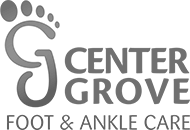Our Surgical Needs Frequently Asked Questions
When faced with the possibility of surgery, our patients understandably have a lot of questions. Read our answers to some of the more common ones here.
- Page 1
-
If I go to a foot and ankle surgeon, does that mean my problem will be treated surgically?
No. In fact, foot and ankle surgeons are trained to make all reasonable efforts to treat foot and ankle problems nonsurgically if at all possible. Surgery is recommended only if other options are not feasible or do not adequately relieve your problem.
-
How Bad Will It Hurt After Surgery?
Keeping you comfortable following surgery so that your surgical experience is positive is our top priority. Less pain helps with a speedy recovery and the good news is that we have many techniques to keep you comfortable. Yes some pain will accompany the process of healing following surgery but with the proper care you can be more comfortable than you might expect.
First, immediately following surgery you will receive a long acting local anesthetic block so that when you wake up following surgery your foot will be numb. This usually will last most of the day and often even into the evening so that you can get home and back in a comfortable environment.
The RICE method – Rest, Ice, Compression and Elevation is used to reduce swelling and pain. Most pain following surgery is caused by swelling. Using the RICE method will help minimize the swelling following surgery. In many cases a Cryo Cuff or boot that continuously circulates cold water around the surgical site is used.
In todays healthcare climate where efforts to reduce prescription drug addiction, there are stronger ant-inflammatory medications available to help reduce the amount of pain relievers containing narcotics. Most patients will usually only require a few days of pain medication.
-
What foot conditions may require surgery?
 At Center Grove Foot and Ankle Care, our focus is on non-invasive, non-surgical treatment to relieve your foot or ankle pain. However, when the conservative approach fails to give you the results you want, I will talk to you about your surgical options. Three of the conditions that most commonly require surgery in my office are bunion deformities, hallux rigidus, and hammer toe deformity.
At Center Grove Foot and Ankle Care, our focus is on non-invasive, non-surgical treatment to relieve your foot or ankle pain. However, when the conservative approach fails to give you the results you want, I will talk to you about your surgical options. Three of the conditions that most commonly require surgery in my office are bunion deformities, hallux rigidus, and hammer toe deformity.When You May Need Surgery
As a board-certified surgeon, I am qualified to perform surgery if other treatment options don’t work for you. The conditions I most frequently operate on include the following:
- Bunion deformities. A bunion is a bony bump at the base of the big toe, often caused by wearing narrow shoes or as a result of arthritis. The pain and discomfort caused by a bunion may be alleviated with special pads, splints, orthopedic shoes, or with pain relievers and ice packs. When that fails and you want a permanent solution, a bunionectomy may be performed. This outpatient procedure involves shaving off excess bone and realigning the toe.
- Hallux rigidus. Affecting the joint at the base of the big toe, this condition is a form of arthritis that may be caused by a structural abnormality or foot alignment issues. When conservative treatments such as shoe modifications, anti-inflammatories, and physical therapy fail to relieve the pain, surgery may be considered. In the early stages of the condition, surgery may be used to remove bone spurs, but more advanced conditions may require a joint replacement or joint fusion procedure.
- Hammertoe deformity. Toes that bend upward in the middle are known as hammertoes. The deformity can be accompanied by painful corns between or on top of the toes and calluses on the bottom of the toes. When padding or stretching footwear fails to relieve the discomfort, surgery may be required. Depending on the type of hammertoe you have, I will either perform a tendon transfer procedure or a joint resection or fusion procedure.
These procedures can usually be performed as outpatient surgeries and require six to eight weeks for full recovery.
If you are experiencing toe joint pain or have a bunion, schedule an appointment with me today. Often, when a condition is treated early, these surgical procedures can be avoided.
